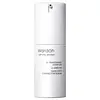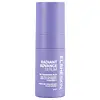What's inside
What's inside
 Key Ingredients
Key Ingredients

 Benefits
Benefits

 Concerns
Concerns

 Ingredients Side-by-side
Ingredients Side-by-side

Water
Skin ConditioningGlycerin
HumectantCyclopentasiloxane
EmollientNiacinamide
SmoothingDimethicone
EmollientButylene Glycol
HumectantAluminum Starch Octenylsuccinate
AbsorbentPentylene Glycol
Skin ConditioningTrehalose
HumectantHydroxyethyl Acrylate/Sodium Acryloyldimethyl Taurate Copolymer
Emulsion StabilisingPolymethyl Methacrylate
Phenoxyethanol
PreservativeCetearyl Dimethicone Crosspolymer
Bisabolol
MaskingChlorphenesin
AntimicrobialGlyceryl Polyacrylate
Disodium EDTA
Sodium Hydroxide
BufferingParfum
Masking1,2-Hexanediol
Skin ConditioningCaprylyl Glycol
EmollientTranexamoyl Dipeptide-23
BleachingAlpha-Arbutin
AntioxidantLeontopodium Alpinum Extract
Skin ConditioningCitric Acid
BufferingPotassium Sorbate
PreservativeSodium Benzoate
MaskingWater, Glycerin, Cyclopentasiloxane, Niacinamide, Dimethicone, Butylene Glycol, Aluminum Starch Octenylsuccinate, Pentylene Glycol, Trehalose, Hydroxyethyl Acrylate/Sodium Acryloyldimethyl Taurate Copolymer, Polymethyl Methacrylate, Phenoxyethanol, Cetearyl Dimethicone Crosspolymer, Bisabolol, Chlorphenesin, Glyceryl Polyacrylate, Disodium EDTA, Sodium Hydroxide, Parfum, 1,2-Hexanediol, Caprylyl Glycol, Tranexamoyl Dipeptide-23, Alpha-Arbutin, Leontopodium Alpinum Extract, Citric Acid, Potassium Sorbate, Sodium Benzoate
Water
Skin ConditioningNiacinamide
SmoothingTranexamic Acid
AstringentButylene Glycol
HumectantPropanediol
SolventDipropylene Glycol
HumectantGlycerin
HumectantUndecylenoyl Phenylalanine
Skin ConditioningAlpha-Arbutin
AntioxidantArbutin
AntioxidantCitric Acid
BufferingSodium Sulfite
PreservativeAcetyl Tyrosine
Skin ConditioningSaxifraga Sarmentosa Extract
Skin ConditioningPaeonia Suffruticosa Root Extract
Skin ProtectingAminopropyl Ascorbyl Phosphate
AntioxidantScutellaria Baicalensis Root Extract
AstringentGlutathione
Sodium Palmitoyl Proline
Skin ConditioningNymphaea Alba Flower Extract
Skin ConditioningPEG-8
HumectantCaprylyl Glycol
EmollientHelianthus Annuus Seed Extract
Skin ConditioningPPG-1-PEG-9 Lauryl Glycol Ether
EmulsifyingHedera Helix Leaf Extract
Skin ConditioningPhytic Acid
Sodium Polyacrylate
AbsorbentDipeptide Diaminobutyroyl Benzylamide Diacetate
Skin ConditioningLactic Acid
BufferingPolyacrylamide
C13-14 Isoparaffin
EmollientLaureth-7
EmulsifyingHydroxyethyl Acrylate/Sodium Acryloyldimethyl Taurate Copolymer
Emulsion StabilisingHexapeptide-2
BleachingKojic Acid
AntioxidantAcetyl Glucosamine
Skin ConditioningArisaema Amurense Extract
Skin ConditioningDecyl Glucoside
Cleansing1,2-Hexanediol
Skin ConditioningPhenylethyl Resorcinol
AntioxidantEthylhexylglycerin
Skin ConditioningFarnesol
PerfumingLinalool
PerfumingAllantoin
Skin ConditioningDisodium EDTA
Glycyrrhiza Glabra Root Extract
BleachingSodium Bisulfite
AntioxidantSodium Metabisulfite
AntioxidantWater, Niacinamide, Tranexamic Acid, Butylene Glycol, Propanediol, Dipropylene Glycol, Glycerin, Undecylenoyl Phenylalanine, Alpha-Arbutin, Arbutin, Citric Acid, Sodium Sulfite, Acetyl Tyrosine, Saxifraga Sarmentosa Extract, Paeonia Suffruticosa Root Extract, Aminopropyl Ascorbyl Phosphate, Scutellaria Baicalensis Root Extract, Glutathione, Sodium Palmitoyl Proline, Nymphaea Alba Flower Extract, PEG-8, Caprylyl Glycol, Helianthus Annuus Seed Extract, PPG-1-PEG-9 Lauryl Glycol Ether, Hedera Helix Leaf Extract, Phytic Acid, Sodium Polyacrylate, Dipeptide Diaminobutyroyl Benzylamide Diacetate, Lactic Acid, Polyacrylamide, C13-14 Isoparaffin, Laureth-7, Hydroxyethyl Acrylate/Sodium Acryloyldimethyl Taurate Copolymer, Hexapeptide-2, Kojic Acid, Acetyl Glucosamine, Arisaema Amurense Extract, Decyl Glucoside, 1,2-Hexanediol, Phenylethyl Resorcinol, Ethylhexylglycerin, Farnesol, Linalool, Allantoin, Disodium EDTA, Glycyrrhiza Glabra Root Extract, Sodium Bisulfite, Sodium Metabisulfite
Ingredients Explained
These ingredients are found in both products.
Ingredients higher up in an ingredient list are typically present in a larger amount.
1,2-Hexanediol is a synthetic liquid and another multi-functional powerhouse.
It is a:
- Humectant, drawing moisture into the skin
- Emollient, helping to soften skin
- Solvent, dispersing and stabilizing formulas
- Preservative booster, enhancing the antimicrobial activity of other preservatives
Alpha-Arbutin is made from hydroquinone and glucose. It may also be derived from the fermentation of soybeans.
This ingredient an antioxidant, meaning it helps protect your skin cells against damage.
Studies show this ingredient helps improve hyperpigmentation and fade discoloration.
Alpha-Arbutin may be used with other ingredients that help with hyperpigmentation. These ingredients include retinol, Vitamin C, niacinamide, and tranexamic acid.
Learn more about Alpha-ArbutinButylene Glycol (or BG) is used within cosmetic products for a few different reasons:
Overall, Butylene Glycol is a safe and well-rounded ingredient that works well with other ingredients.
Though this ingredient works well with most skin types, some people with sensitive skin may experience a reaction such as allergic rashes, closed comedones, or itchiness.
Learn more about Butylene GlycolCaprylyl Glycol is a humectant and emollient, meaning it attracts and preserves moisture.
It is a common ingredient in many products, especially those designed to hydrate skin. The primary benefits are retaining moisture, skin softening, and promoting a healthy skin barrier.
Though Caprylyl Glycol is an alcohol derived from fatty acids, it is not the kind that can dry out skin.
This ingredient is also used as a preservative to extend the life of products. It has slight antimicrobial properties.
Learn more about Caprylyl GlycolCitric Acid is an alpha hydroxy acid (AHA) naturally found in citrus fruits like oranges, lemons, and limes.
Like other AHAs, citric acid can exfoliate skin by breaking down the bonds that hold dead skin cells together. This helps reveal smoother and brighter skin underneath.
However, this exfoliating effect only happens at high concentrations (20%) which can be hard to find in cosmetic products.
Due to this, citric acid is usually included in small amounts as a pH adjuster. This helps keep products slightly more acidic and compatible with skin's natural pH.
In skincare formulas, citric acid can:
While it can provide some skin benefits, research shows lactic acid and glycolic acid are generally more effective and less irritating exfoliants.
Most citric acid used in skincare today is made by fermenting sugars (usually from molasses). This synthetic version is identical to the natural citrus form but easier to stabilize and use in formulations.
Read more about some other popular AHA's here:
Learn more about Citric AcidDisodium EDTA plays a role in making products more stable by aiding other preservatives.
It is a chelating agent, meaning it neutralizes metal ions that may be found in a product.
Disodium EDTA is a salt of edetic acid and is found to be safe in cosmetic ingredients.
Learn more about Disodium EDTAGlycerin is already naturally found in your skin. It helps moisturize and protect your skin.
A study from 2016 found glycerin to be more effective as a humectant than AHAs and hyaluronic acid.
As a humectant, it helps the skin stay hydrated by pulling moisture to your skin. The low molecular weight of glycerin allows it to pull moisture into the deeper layers of your skin.
Hydrated skin improves your skin barrier; Your skin barrier helps protect against irritants and bacteria.
Glycerin has also been found to have antimicrobial and antiviral properties. Due to these properties, glycerin is often used in wound and burn treatments.
In cosmetics, glycerin is usually derived from plants such as soybean or palm. However, it can also be sourced from animals, such as tallow or animal fat.
This ingredient is organic, colorless, odorless, and non-toxic.
Glycerin is the name for this ingredient in American English. British English uses Glycerol/Glycerine.
Learn more about GlycerinThis is a synthetic polymer. It helps improve the texture of products by adding thickness and gel-like feel.
It is also an emulsifer, meaning it prevents ingredients such as oil and water from separating. It also helps evenly disperse other ingredients.
Niacinamide is a multitasking form of vitamin B3 that strengthens the skin barrier, reduces pores and dark spots, regulates oil, and improves signs of aging.
And the best part? It's gentle and well-tolerated by most skin types, including sensitive and reactive skin.
You might have heard of "niacin flush", or the reddening of skin that causes itchiness. Niacinamide has not been found to cause this.
In very rare cases, some individuals may not be able to tolerate niacinamide at all or experience an allergic reaction to it.
If you are experiencing flaking, irritation, and dryness with this ingredient, be sure to double check all your products as this ingredient can be found in all categories of skincare.
When incorporating niacinamide into your routine, look out for concentration amounts. Typically, 5% niacinamide provides benefits such as fading dark spots. However, if you have sensitive skin, it is better to begin with a smaller concentration.
When you apply niacinamide to your skin, your body converts it into nicotinamide adenine dinucleotide (NAD). NAD is an essential coenzyme that is already found in your cells as "fuel" and powers countless biological processes.
In your skin, NAD helps repair cell damage, produce new healthy cells, support collagen production, strengthen the skin barrier, and fight environmental stressors (like UV and pollution).
Our natural NAD levels start to decline with age, leading to slower skin repair, visible aging, and a weaker skin barrier. By providing your skin niacinamide, you're recharging your skin's NAD levels. This leads to stronger, healthier, and younger looking skin.
Another name for vitamin B3 is nicotinamide. This vitamin is water-soluble and our bodies don't store it. We obtain Vitamin B3 from either food or skincare. Meat, fish, wheat, yeast, and leafy greens contain vitamin B3.
The type of niacinamide used in skincare is synthetically created.
Learn more about NiacinamideWater. It's the most common cosmetic ingredient of all. You'll usually see it at the top of ingredient lists, meaning that it makes up the largest part of the product.
So why is it so popular? Water most often acts as a solvent - this means that it helps dissolve other ingredients into the formulation.
You'll also recognize water as that liquid we all need to stay alive. If you see this, drink a glass of water. Stay hydrated!
Learn more about Water